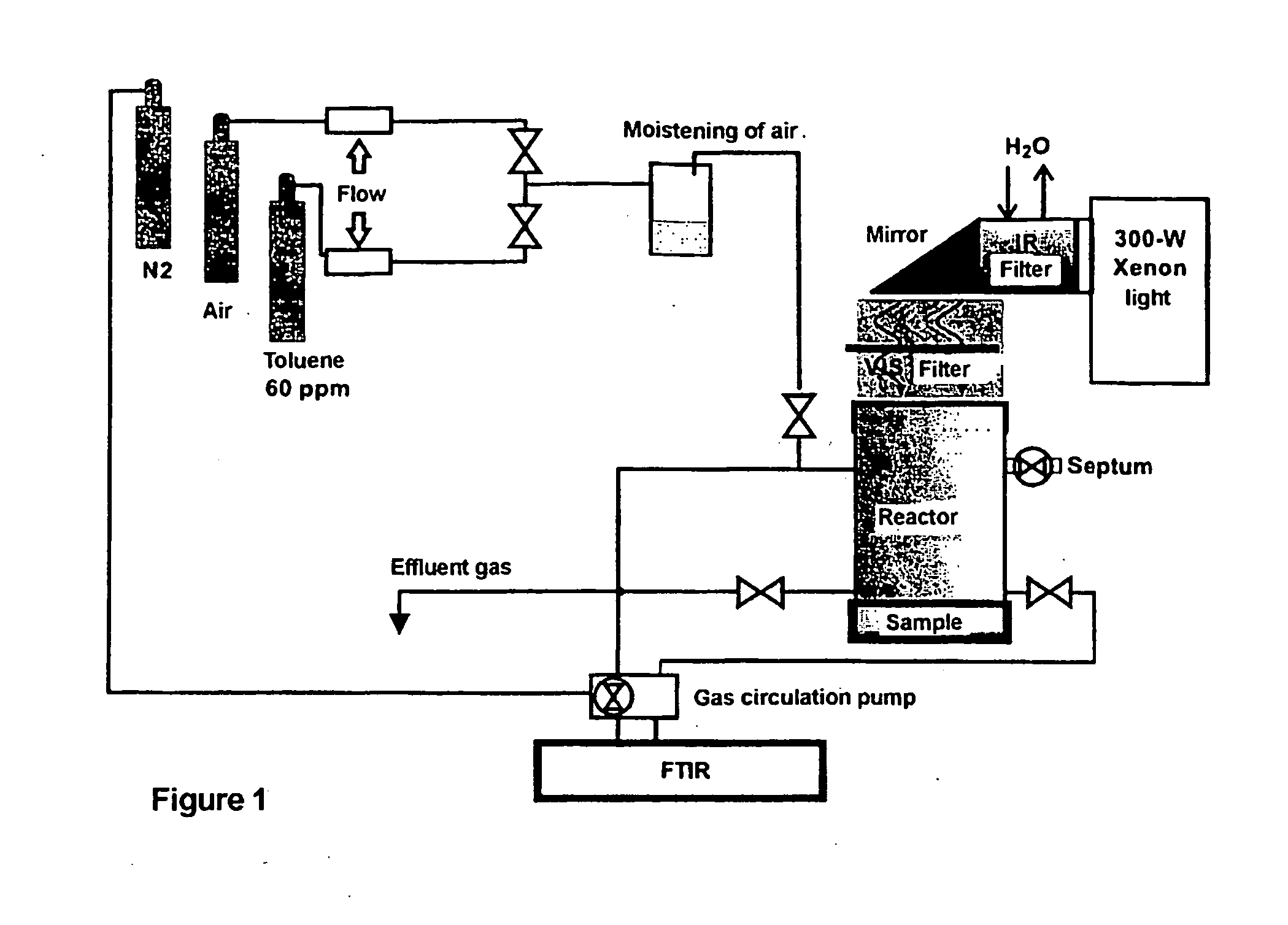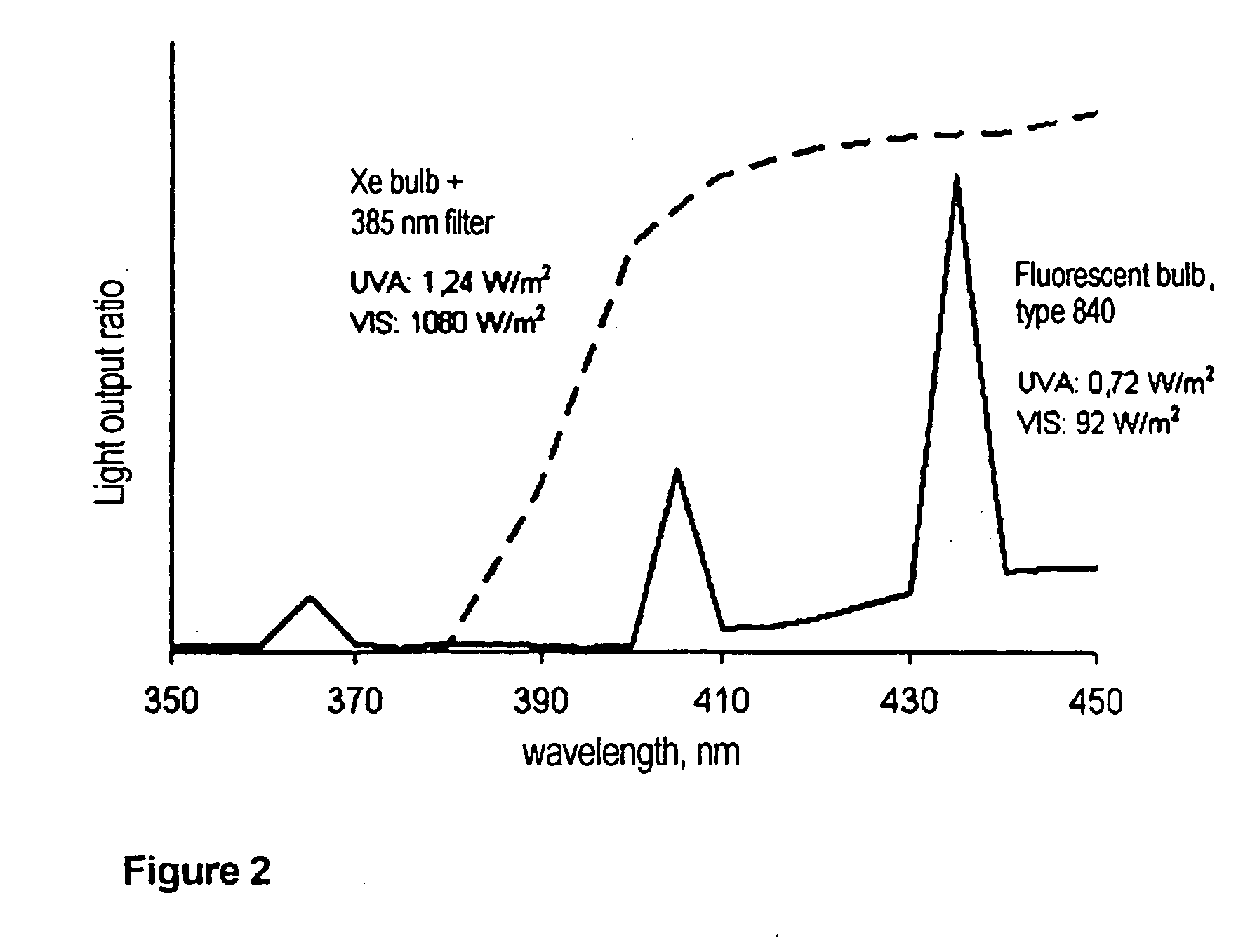Titanium oxide product method for making the same and its use as a photocatalyst
a technology of titanium oxide and product method, which is applied in the field of titanium oxide product method for making the same and its use as a photocatalyst, can solve the problems of shrinkage of specific surface and increase of crystal siz
- Summary
- Abstract
- Description
- Claims
- Application Information
AI Technical Summary
Problems solved by technology
Method used
Image
Examples
example 1
[0057] Photocatalytic hydrated titanium dioxide was prepared by precipitating from a volume of 500 ml of titanium oxychloride solution (236 g / l TiO2 and 330 g / l HCl) with rutile nuclei (TiO2 30 g / l), added at 3%, as calculated on the basis of TiO2. The mixture was stirred for three hours at 80° C., whereby the yield of hydrated TiO2 was 98.3%. The acidic precipitate formed was filtered off and washed with excess of water. The acidic precipitate obtained was then neutralized with ammonia (200-400 g / l) to a pH of 6, and the mixture stirred for half an hour. The precipitate was filtered and washed with warm distilled water. The precipitate was dried in air at 200° C for one hour.
[0058] The rutile content of the product was more than 99.5% in rutile based on powder X-ray diffraction measurement. The crystal size of rutile was measured on the basis of the broadening of the peak of the X-ray diffraction pattern of rutile by using the Scherrer equation. The obtained crystal size was 10 nm...
example 2
[0060] Photocatalytic hydrated titanium dioxide was prepared as in Example 1. However, the obtained precipitate was calcined at various temperatures for one hour. The temperatures chosen were 300° C., 400° C., 500° C., and 700° C. The measured properties and the photoactivity results are shown in Table 1.
example 3
[0061] Photocatalytic hydrated titanium dioxide (5000 ml) was precipitated from a solution of titanium oxychloride (TiO2 208.5 g / l) with nuclei (TiO2 30 g / l), which were added at 2% calculated on the basis of TiO2. The mixture was stirred for three hours at 90° C., whereby the yield of TiO2 was 96%. To the slurry was added 3 l of water and after the settling of the precipitate the overflow was discarded. Then, the precipitate was filtered off and washed with excess of water. The acidic precipitate was then neutralized with sodium hydroxide to pH 8 and the mixture was stirred for half an hour. The precipitate was filtered and washed with warm distilled water. The precipitate was dried at 270° C. for four hours and the measured pH was 9.9. The measured properties and photoactivity results are shown in Table 1.
PUM
| Property | Measurement | Unit |
|---|---|---|
| Temperature | aaaaa | aaaaa |
| Temperature | aaaaa | aaaaa |
| Temperature | aaaaa | aaaaa |
Abstract
Description
Claims
Application Information
 Login to view more
Login to view more - R&D Engineer
- R&D Manager
- IP Professional
- Industry Leading Data Capabilities
- Powerful AI technology
- Patent DNA Extraction
Browse by: Latest US Patents, China's latest patents, Technical Efficacy Thesaurus, Application Domain, Technology Topic.
© 2024 PatSnap. All rights reserved.Legal|Privacy policy|Modern Slavery Act Transparency Statement|Sitemap


